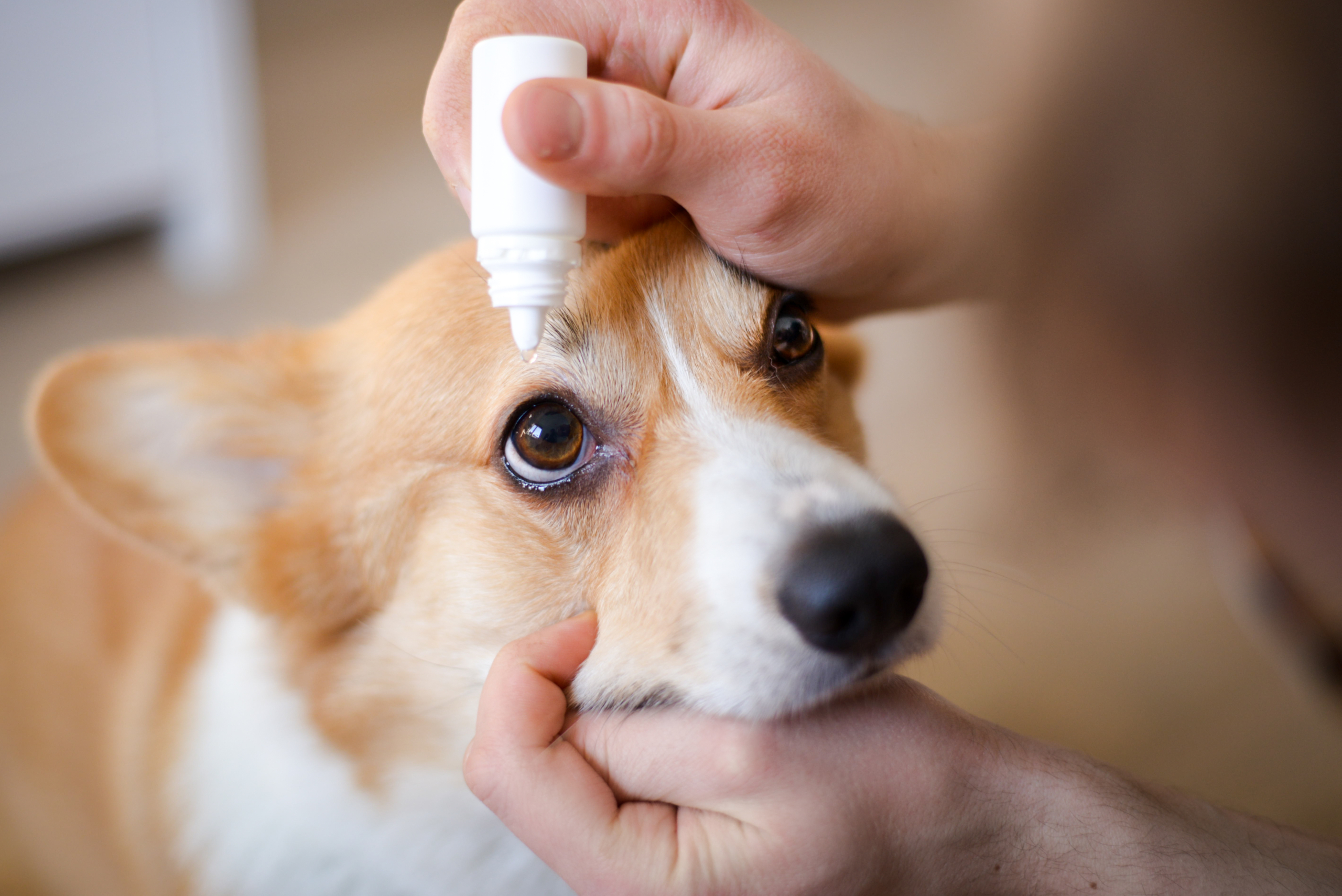
The cornea, which is transparent in normal conditions, covers the front part of the eye and allows light to pass into the eye. The eyelids cover the cornea to protect it from trauma and help spread tears (essential to corneal health). Most corneal ulcers in pets result from trauma, such as scratches, dry eye, eyelid anomalies, or abrasions due to foreign objects in the eye.
Corneal Ulcer Symptoms
A corneal ulcer is an open wound within the cornea. Ulcers are painful for pets; most heal within a week if appropriately treated. However, if a corneal ulcer becomes infected, it can quickly turn into a deep wound. The most common symptoms of corneal ulcers to watch for in pets include the following:
- Squinting
- Redness
- Ocular discharge
- Excessive Blinking
- Excessive tears
- Swelling
- The eye appears cloudy
If the ulcer results from a tear deficiency, you may see a thick discharge resembling mucous that ranges from transparent to white, green, or yellow. If you are a cat parent, a dog parent, or a veterinarian who wants to provide helpful materials to your patients of specific pets, please read the following information:
Corneal Ulcer Diagnosis
Any of the signs mentioned above should prompt pet parents to make an appointment with their veterinarian. The vet will use several diagnostic methods at the appointment to accurately diagnose the ulcer. Once the affected eye (or eyes) are examined, your vet will discuss the best possible treatment plan.
Corneal Ulcer Treatment
How a pet’s corneal ulcer is treated is determined by the type of animal in need of treatment and the type of ulcer they are being treated for. Treating corneal ulcers properly from the start is crucial to ensuring a pet’s comfort and healing without further complications or damage to its vision. Mild corneal ulcers will usually heal on their own in 3-7 days, depending on the size of the ulcer. While healing, vets may recommend a treatment plan to prevent further damage or cornea infections.
Here are common treatments used to treat corneal ulcers in pets:
- Antibiotic eye drops or ointments to prevent infections
- Pain medication to keep your pet comfortable
- An E-collar to prevent your pet from rubbing and allow the cornea to heal properly
- Regenerative eye drops
Regenerative eye drops, like Vetrix EyeQ Eye Drops, are a simple way to provide regenerative care for a pet’s eye. Regenerative medicine works with the body’s natural abilities to heal itself. EyeQ Eye Drops deliver natural anti-microbial and anti-inflammatory components to aid in healing corneal ulcers in pets.
As part of the healing process, a follow-up care plan must be issued and adhered to by the patient. Pets should continue treatment with all prescribed medications until a veterinarian says the ulcer has fully healed.

